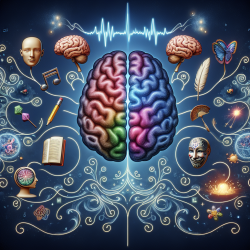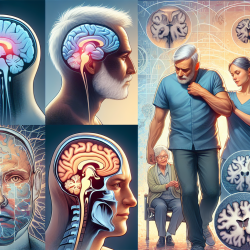The intricate dance of brainwaves during language development is a fascinating subject that continues to intrigue researchers and practitioners alike. Recent findings from a study titled "Beta synchrony for expressive language lateralizes to right hemisphere in development" provide groundbreaking insights into how expressive language skills develop in children and adolescents. This research not only deepens our understanding of neuroplasticity but also offers practical implications for enhancing therapeutic practices in educational settings.
The Role of Beta Synchrony in Language Development
Traditionally, the left hemisphere of the brain has been associated with language processing. However, this new study reveals a more nuanced picture. It highlights how beta event-related synchronization (ERS) shifts from a bilateral to a predominantly right-hemispheric pattern as children grow into adolescence. This shift suggests that the right hemisphere plays a crucial role in the maturation of expressive language skills.
The research utilized magnetoencephalography (MEG) to observe low-beta ERS during covert verb generation tasks among children aged 4 to 19 years. The findings indicate that while younger children exhibit bilateral ERS, adolescents show significant right-hemisphere lateralization. This progression is linked to age-related changes in neural inhibition and plasticity, offering new perspectives on how language networks evolve over time.
Practical Implications for Practitioners
For practitioners working with children who have developmental language impairments, these findings are particularly valuable. Understanding the role of the right hemisphere in language development can inform more targeted interventions and therapies. Here are some ways practitioners can apply these insights:
- Incorporate Right-Hemisphere Activities: Design activities that engage both hemispheres but focus on strengthening the right hemisphere's involvement in language tasks. This could include creative storytelling or music-based exercises.
- Monitor Developmental Progress: Use tools like MEG or EEG to track changes in brain activity patterns over time, allowing for more personalized intervention strategies.
- Promote Neuroplasticity: Encourage activities that enhance neural flexibility and adaptability, such as bilingual education or cross-disciplinary learning experiences.
The Path Forward: Encouraging Further Research
This study opens up numerous avenues for further exploration. Researchers are encouraged to delve deeper into how ERS patterns correlate with specific language outcomes and how these insights can be translated into practical applications across different age groups and populations. Additionally, investigating the impact of early interventions on altering ERS trajectories could yield valuable information for improving therapeutic outcomes.
The journey of understanding expressive language development is far from over. As we continue to unravel the complexities of brain function and its impact on language skills, collaboration between researchers, educators, and clinicians will be essential in translating these insights into meaningful improvements in educational practices.
Beta synchrony for expressive language lateralizes to right hemisphere in development










